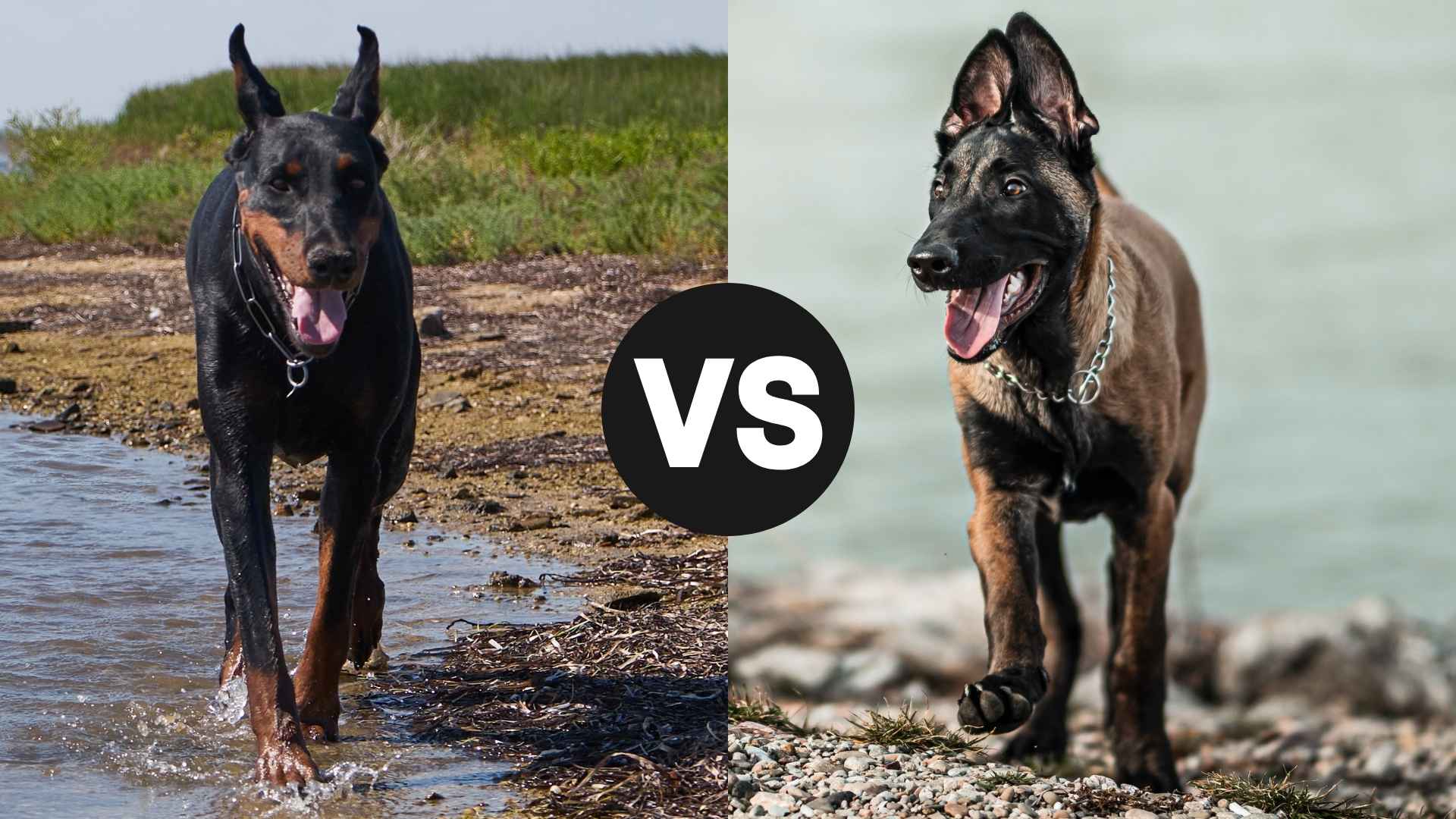Doberman Pinscher or Belgian Malinois—it sounds like a simple choice until you really start comparing. Both are smart. Both are loyal. And both look like they belong in an action movie. But once you dig deeper, it becomes clear they’re built for different kinds of people.
One fits best with owners who want balance—alertness when needed, calm when not. The other? Think constant training, nonstop focus, and high drive. You can’t base this decision on looks or internet videos. You need a breakdown that tells you what it’s really like to live with either one, every single day.
That’s what this article is here for. We’ll walk you through their energy levels, training styles, family behavior, and more, all in plain, simple language. This is about finding the right dog for your life, not just your feed. Ready to cut through the confusion? Let’s dive in.
Doberman Pinscher vs. Belgian Malinois
Size and Physical Build Comparison
Lean vs. Muscular: The core difference
When it comes to size, both breeds fall into the medium-to-large category — but their body types serve very different purposes.
As mentioned in Hills Pet, Dobermans tend to have a more muscular, sculpted build, giving them a sleek but powerful appearance. Males typically stand 26–28 inches at the shoulder and weigh around 75–100 pounds, with females slightly smaller.
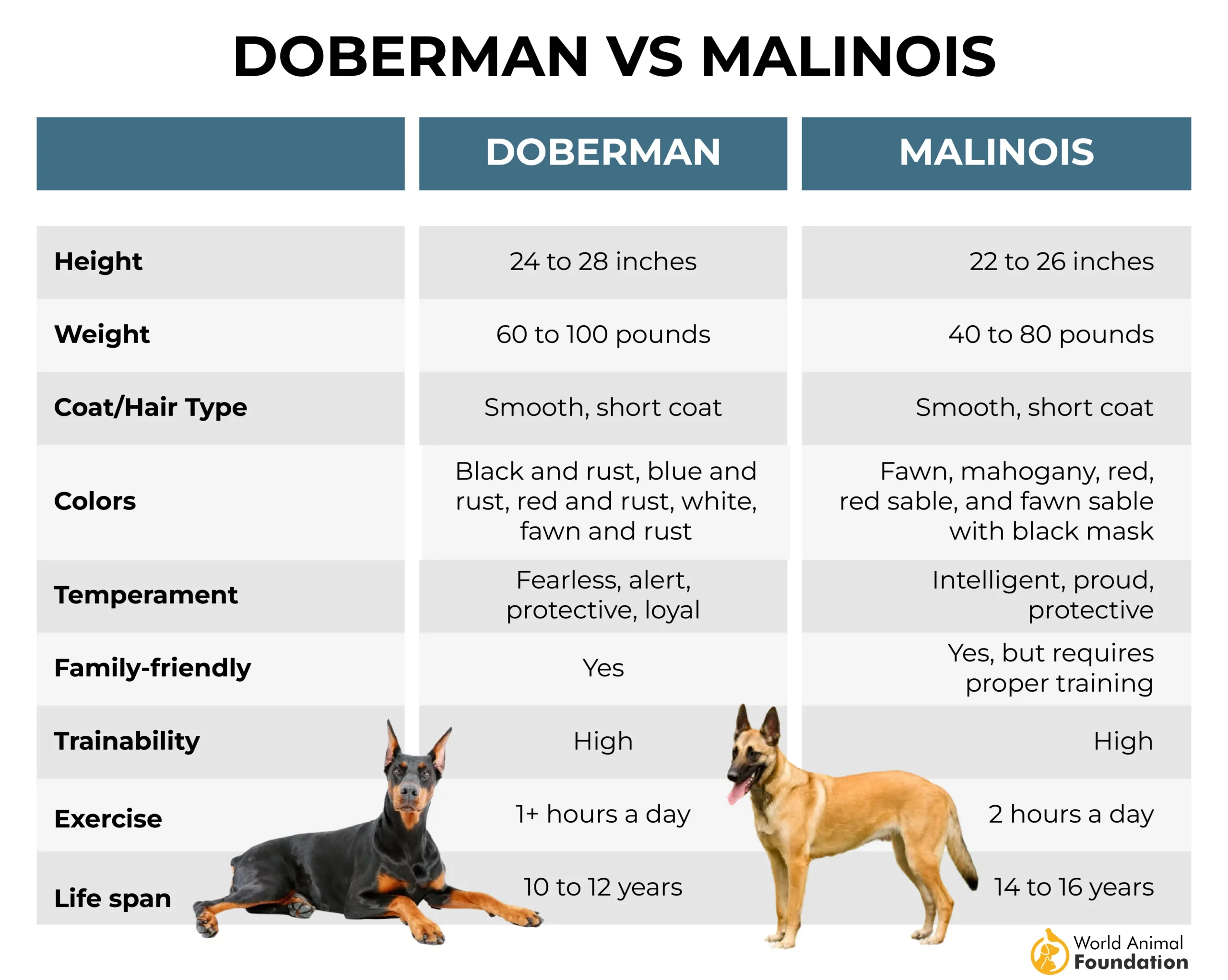
Agility over bulk for the Belgian Malinois
In contrast, the Belgian Malinois has a lighter, more athletic frame. With an average height of 22–26 inches and weighing between 40–80 pounds, they’re built for speed, not mass.
Their lean bodies allow for faster acceleration and quick, precise movements — ideal for roles that require sustained agility over raw strength.
Why size matters in real-world settings
For active dog owners who prioritize stamina, quick responses, and high drive, the Malinois’ lighter frame might be more manageable for day-to-day handling.
On the other hand, the Doberman’s broader chest and denser muscle mass give them a more intimidating presence, which is often preferred in personal protection roles.
Health and Common Medical Concerns
Dobermans: Watch the heart, not just the hips
Dobermans are genetically predisposed to a serious condition called dilated cardiomyopathy (DCM) — a heart disease that can progress silently and quickly, as highlighted by UFAW.
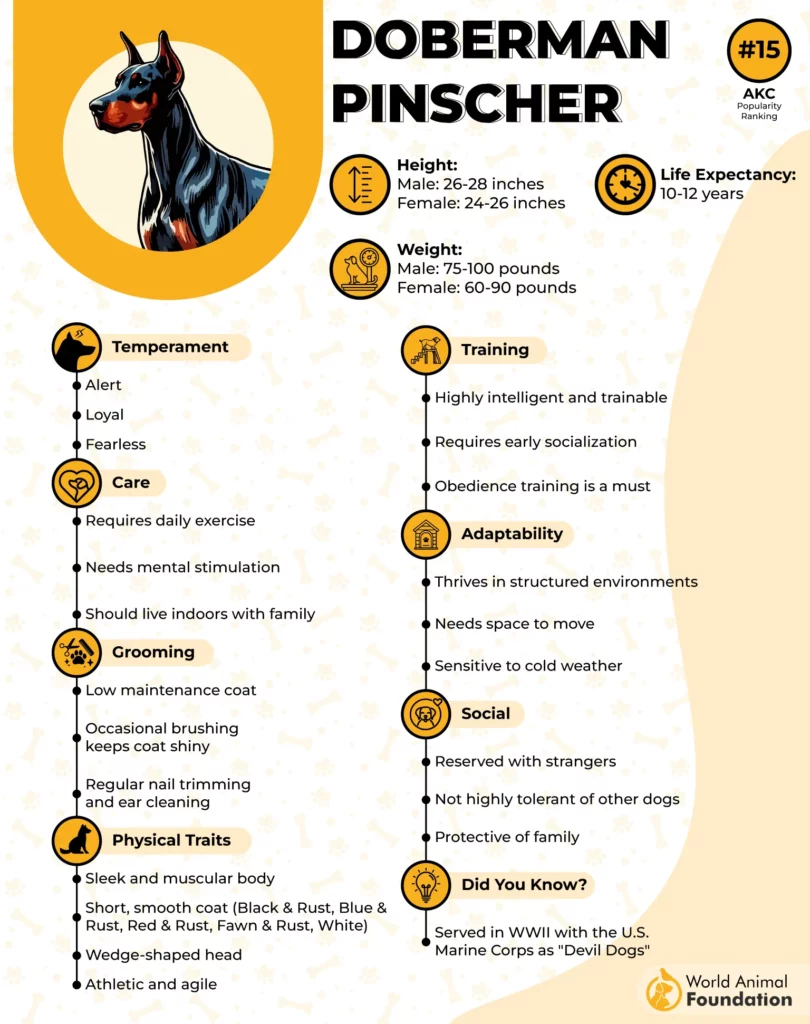
Regular cardiac screening becomes critical, especially from age 3 onward. They’re also prone to von Willebrand’s disease (a clotting disorder) and hypothyroidism, which often go undetected until symptoms surface, such as weight gain or lethargy.
Belgian Malinois: Generally hardy but not immune
While the Malinois is known for its durability and fewer breed-specific conditions, they aren’t without vulnerabilities. Hip and elbow dysplasia can affect their mobility over time, especially in highly active dogs, as PetMD experts mentioned.
Epilepsy also appears more frequently in this dog breed, requiring lifelong management in some cases. Eye issues, such as progressive retinal atrophy, have been documented but are less common.
The impact of lifestyle and genetics
Regardless of the breed, exercise and diet play a crucial role in reducing preventable health issues. But genetics still holds weight. Working with a reputable breeder significantly lowers the risk of inherited diseases through responsible health testing and bloodline screening.
Who tends to live longer?
When looking at longer life expectancy, the Belgian Malinois typically has a slight edge, often reaching 12–14 years compared to the Doberman’s 10–12. This doesn’t mean a Doberman can’t live longer — but proactive care, early screenings, and appropriate activity levels are non-negotiable.
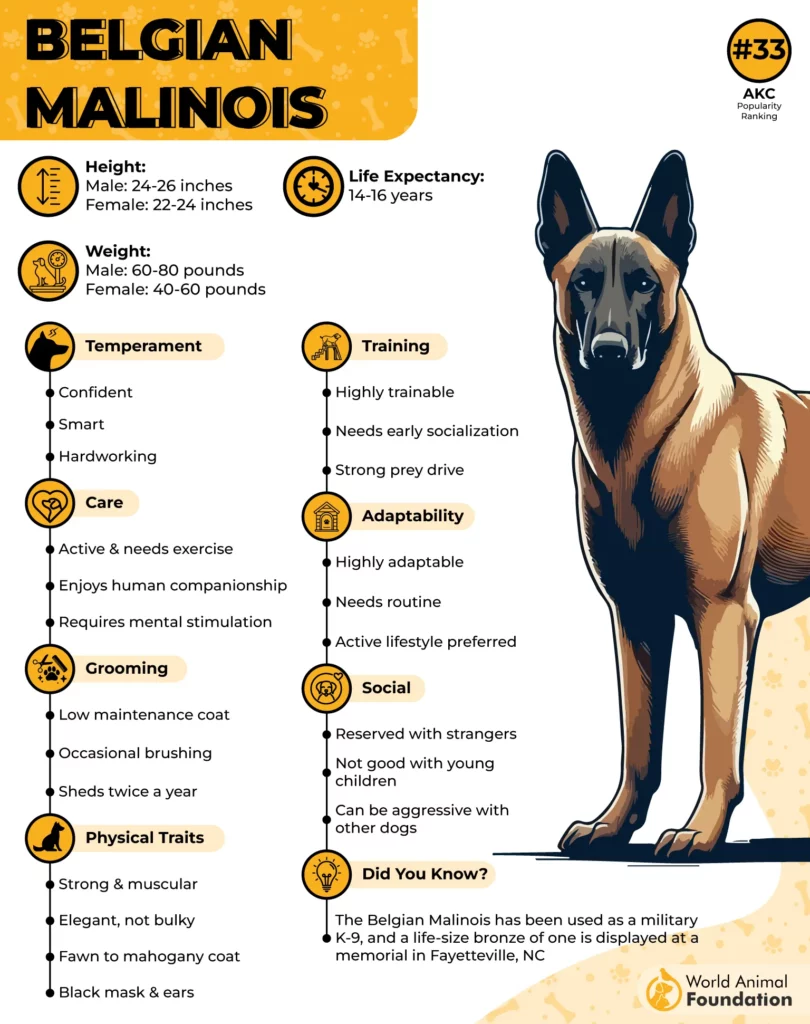
Health doesn’t just happen — it’s managed
For both breeds, preventative veterinary care and joint-friendly exercise routines can dramatically shift long-term outcomes. Owners should also be mindful of stress-induced behaviors, especially in Malinois, where excessive overdrive can lead to injuries if not properly channeled.
Family Compatibility and Bonding
Doberman: Loyal protector with a softer side
Often misunderstood because of their alert presence, Dobermans are in fact deeply affectionate with their families.
Evolved as a protector during World War II, they’ve since evolved into companion dogs with a strong emotional bond to their humans, as per their breed profile by the AKC. When raised from an early age around small children, they’re incredibly gentle, though their strength means supervision is always wise during active play.
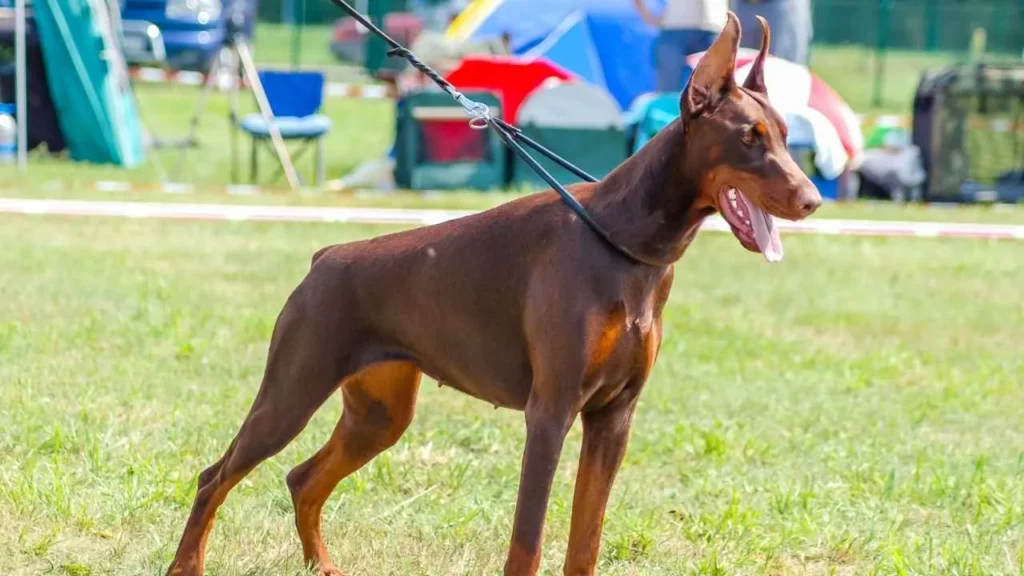
Belgian Malinois: Affectionate, but high-octane
Malinois love their people too — sometimes a little too much. They’re known for forming intense bonds, often attaching closely to one handler.
While that devotion is admirable, it can become challenging in homes with other pets, especially without boundaries. Their herding instincts may cause them to nip or herd small children, not out of aggression, but pure drive.
Coexisting with pets: Know the personality
Dobermans can live peacefully with other dogs and other pets, especially when introduced early and with clear leadership.
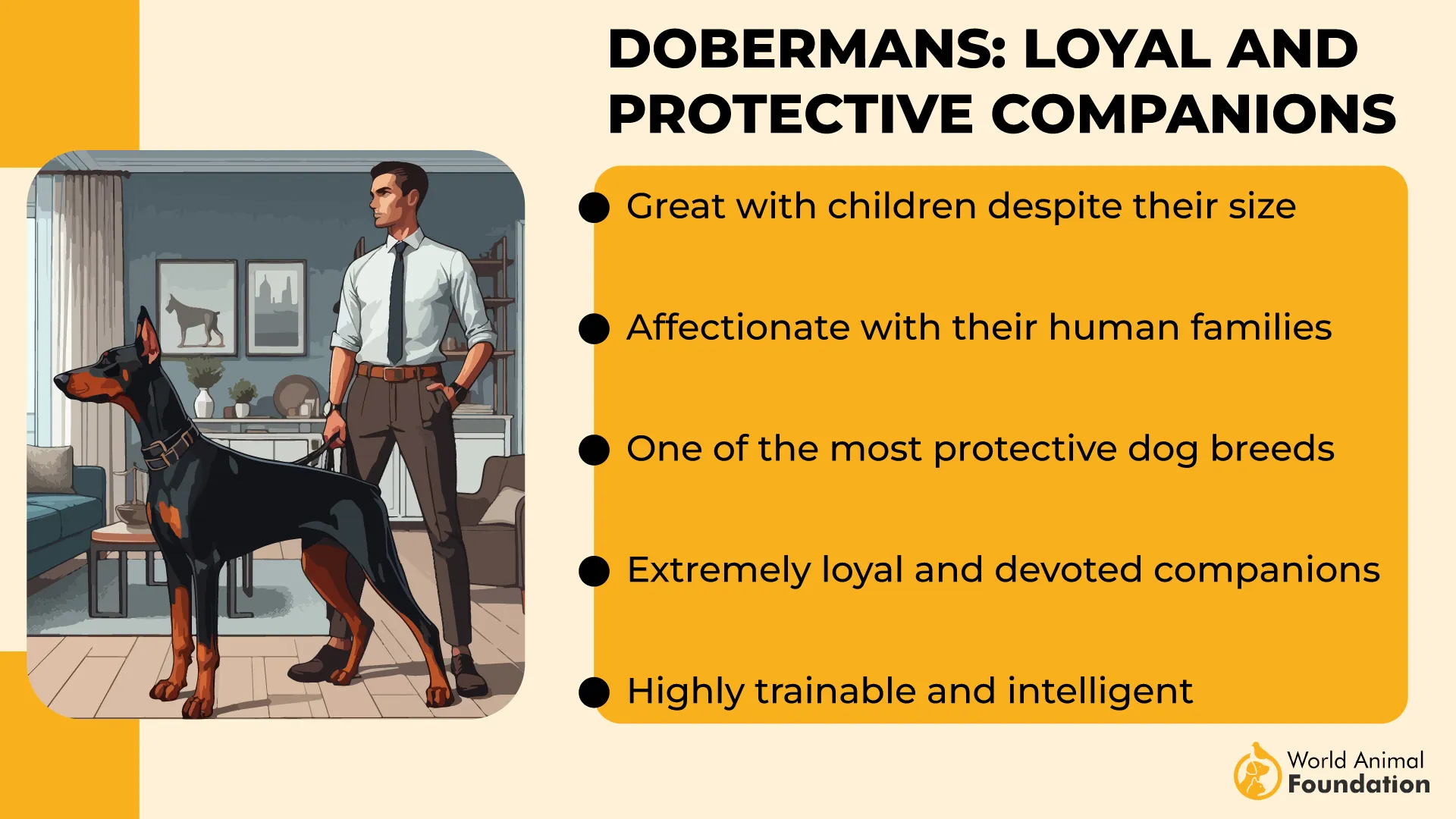
Malinois can too, but their intensity can be overwhelming for laid-back animals. Households with cats or smaller animals may need careful supervision and firm boundaries.
Vocalization and Noise Sensitivity
Doberman: Selective, but not silent
Dobermans are not yappy by nature. They’re more calculated, vocalizing when they sense real reason, especially around strangers or unfamiliar sounds.
While they can be alert barkers, they rarely overdo it unless bored or left alone too long. Their sensitivity to household tension and sudden noise makes them quick to respond, but not overly reactive.
Malinois: Volume with purpose — and sometimes without
Malinois tend to be more vocal overall. Bred for high-alert responsiveness, they’ll bark when stimulated, excited, or sometimes just because something moved outside.

Sudden noises or environmental changes can trigger them, and if their energy isn’t channeled properly, that barking can become persistent. Early socialization helps lower unnecessary reactions, especially in suburban or busy households.
Sensitivity: Emotional and environmental
Both breeds are emotionally perceptive. Yelling or chaos in the home can cause anxiety or hyper-vigilant behaviors.
Calm, confident handlers create calm, confident dogs — and keeping their environments mentally and physically structured goes a long way in keeping unnecessary vocalizations in check.
Exercise Needs and Mental Stimulation
Doberman: Balanced athlete with brains
A Doberman thrives on purpose. Whether it’s agility training, structured play, or mentally stimulating tasks, they crave engagement.
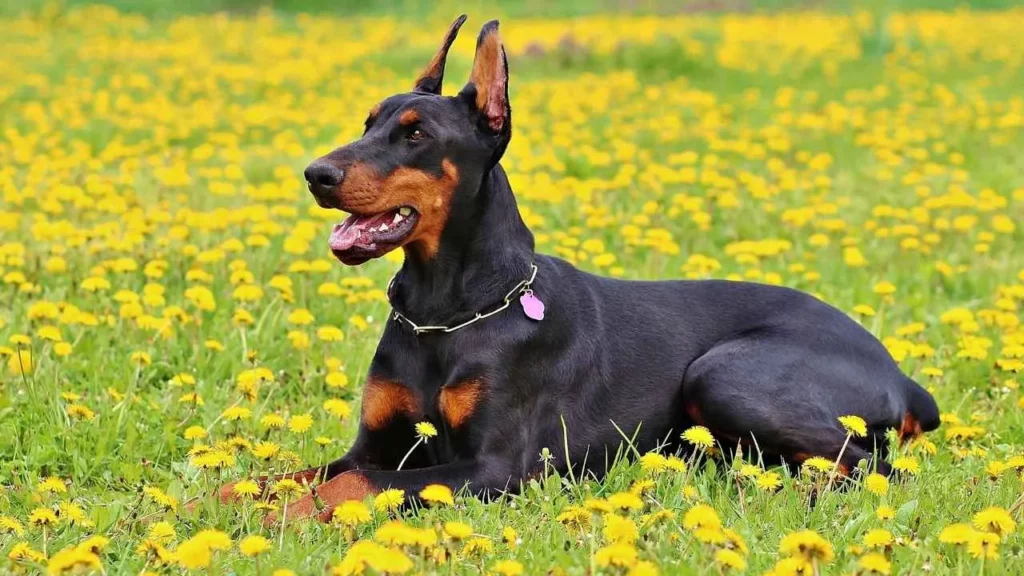
While not as intense as the Malinois, they do need regular, meaningful exercise, at least one to two hours daily. Without it, they may become anxious or protective in unhelpful ways. Proper outlets curb boredom-driven behaviors like digging or chewing.
Malinois: Nonstop energy in a four-legged rocket
Malinois are famously high-drive, and not just physically. They need both movement and challenge. Think obstacle courses, advanced obedience, scent work, or canine sports.
A walk around the block won’t cut it. Lack of mental stimulation is a direct path to destructive behaviors. They’re not ideal for low-energy families, but with the right structure, they’re unstoppable.
Guarding and purpose: It’s in their DNA
Both breeds fall high in the guard dog category, but differ in style. Dobermans are more deliberate, often scanning before acting. Malinois act fast and ask questions later. That protective edge needs focused training from day one, not to suppress it, but to direct it.
Training makes the difference
With proper training, both dogs can be remarkable companions. But especially for Malinois, structured learning isn’t optional — it’s survival. They’re at their best when working alongside their human, learning something new, or having a job to do.
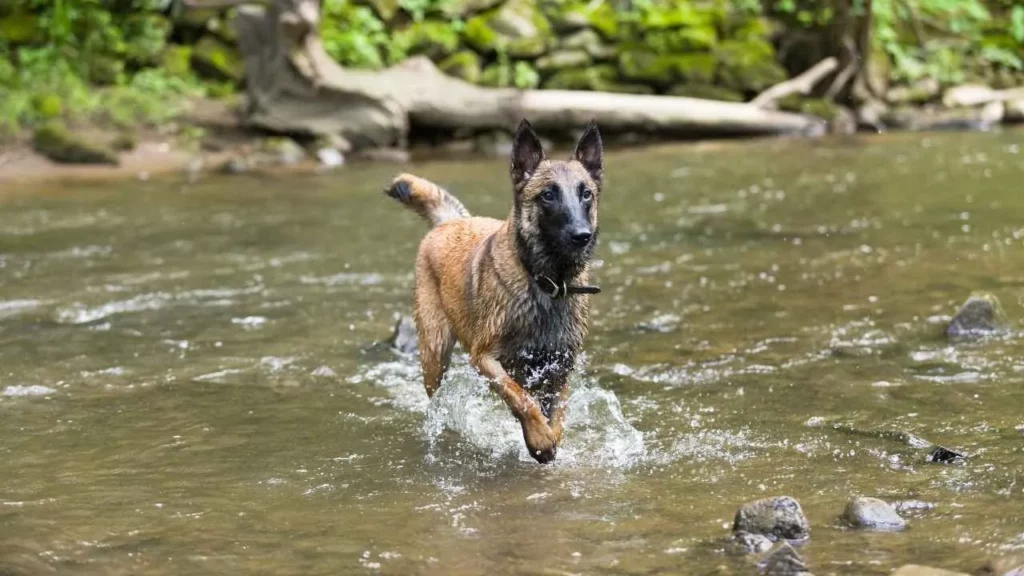
Are they good pets? Depends on you.
In the canine kingdom, these two are often revered as elite — but that doesn’t make them plug-and-play good pets for everyone. They need commitment, structure, and daily engagement to truly thrive. It’s less about how much space you have and more about how much temperament awareness and time you’re ready to give.
Final Thoughts: Choosing Between Doberman and Belgian Malinois
Choose a Doberman if:
You want a protective companion with a calmer energy indoors
You have time for daily exercise, but don’t want extreme stimulation requirements
You prefer a dog that bonds deeply with the whole family, not just one person
You’re looking for a loyal, structured dog that’s slightly more forgiving for first-time working-breed owners
Choose a Belgian Malinois if:

You have an active, working lifestyle and need a dog that can match your pace
You’re experienced with high-drive breeds and confident in providing structure and advanced training
You want a dog that thrives with purpose and performs best when given constant mental challenges
You can commit to daily, advanced engagement (not just playtime — real tasks and jobs)
Conclusion
Choosing between a Doberman Pinscher and a Belgian Malinois isn’t about who looks tougher or cooler on Instagram. It’s about who fits into your life, energy, and expectations.
These aren’t casual companions — they’re high-commitment dogs with purpose bred into their bones. The American Kennel Club doesn’t classify either as service animals, but they’re instinctively driven to protect, engage, and serve.
Before you decide, ask yourself:
Can I give this dog what it needs — structure, time, training, and purpose?
Can I handle the loyalty that sometimes borders on obsession?
This isn’t about finding a pet that fits your schedule. It’s about finding a breed that fits your character.
So don’t rush to adopt. Don’t choose based on viral videos or assumptions. Learn, prepare, and commit. Because the moment you bring one home, you’re not just getting a dog. You’re gaining a responsibility that lasts a lifetime.


